OSWEGO STARCH FACTORY
Artist unidentified; signed “AJH / 77”
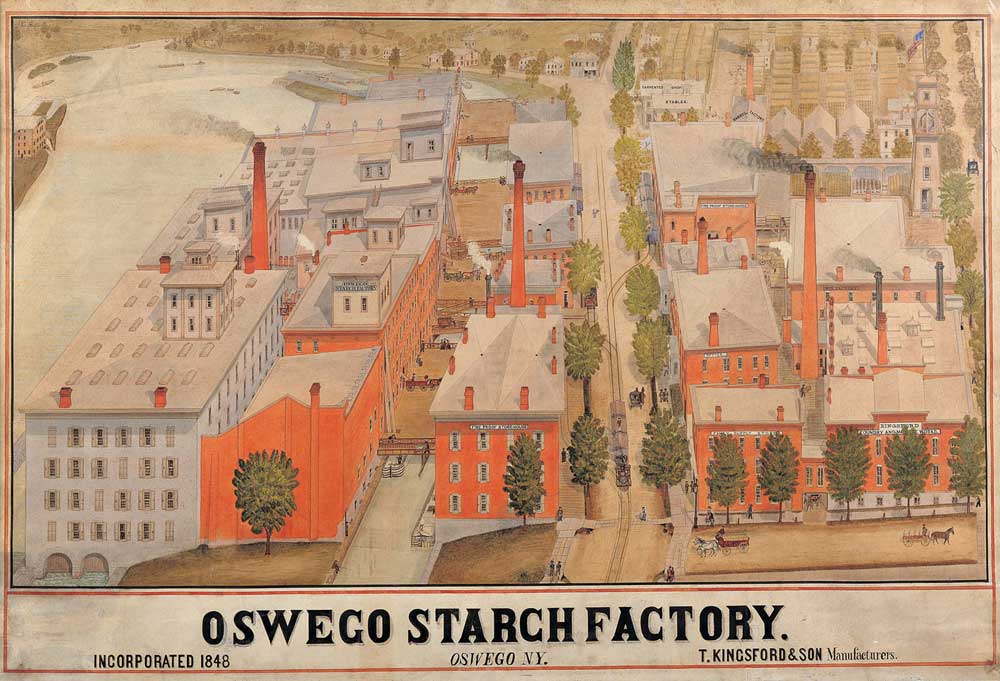
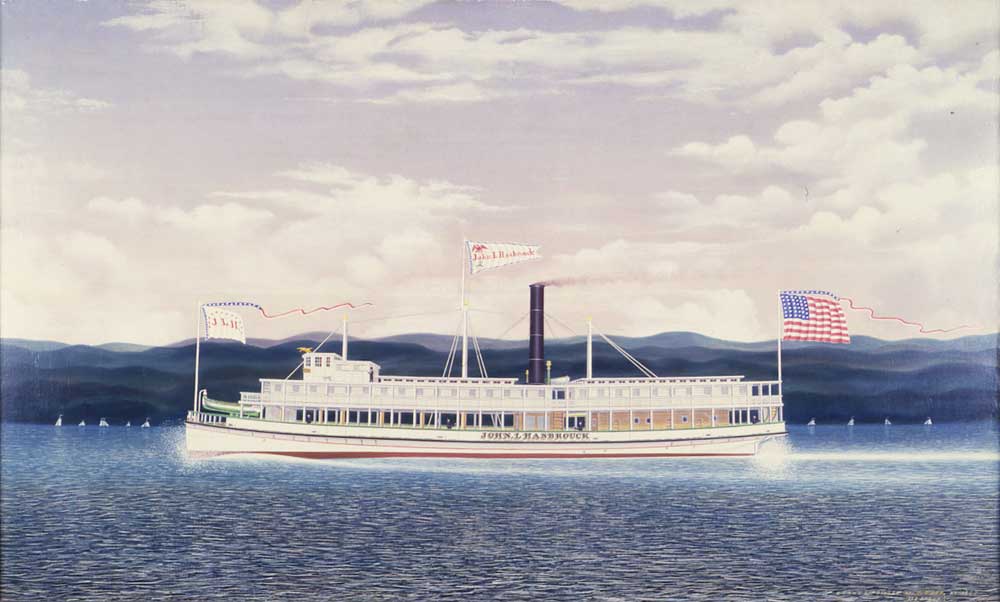
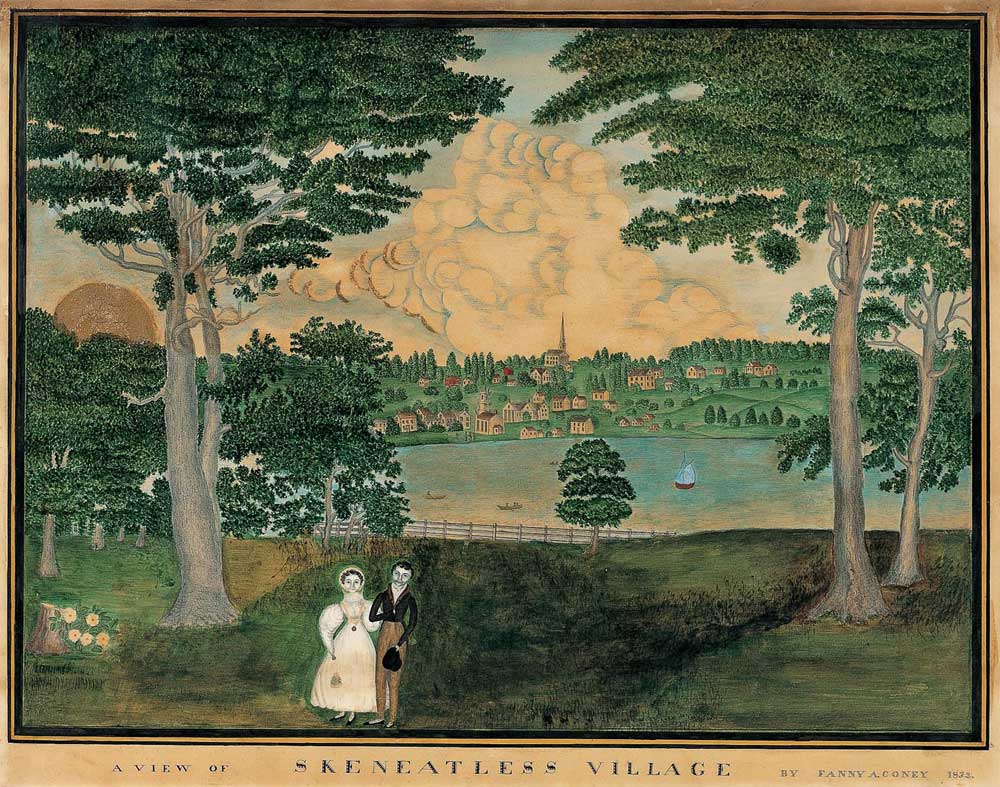
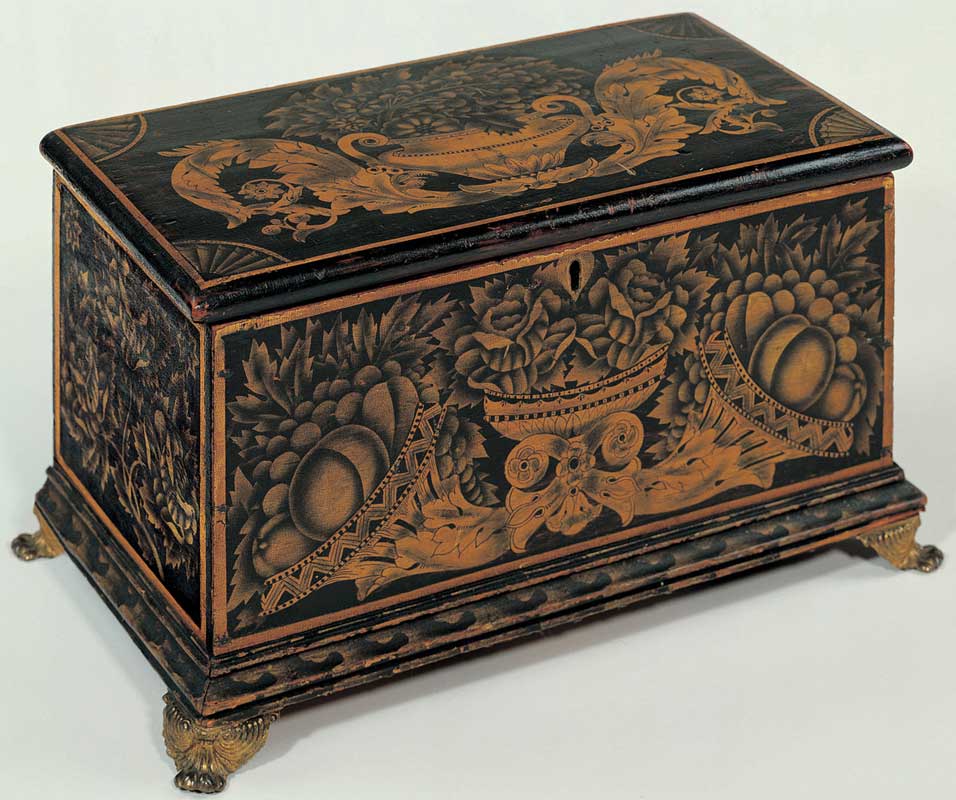
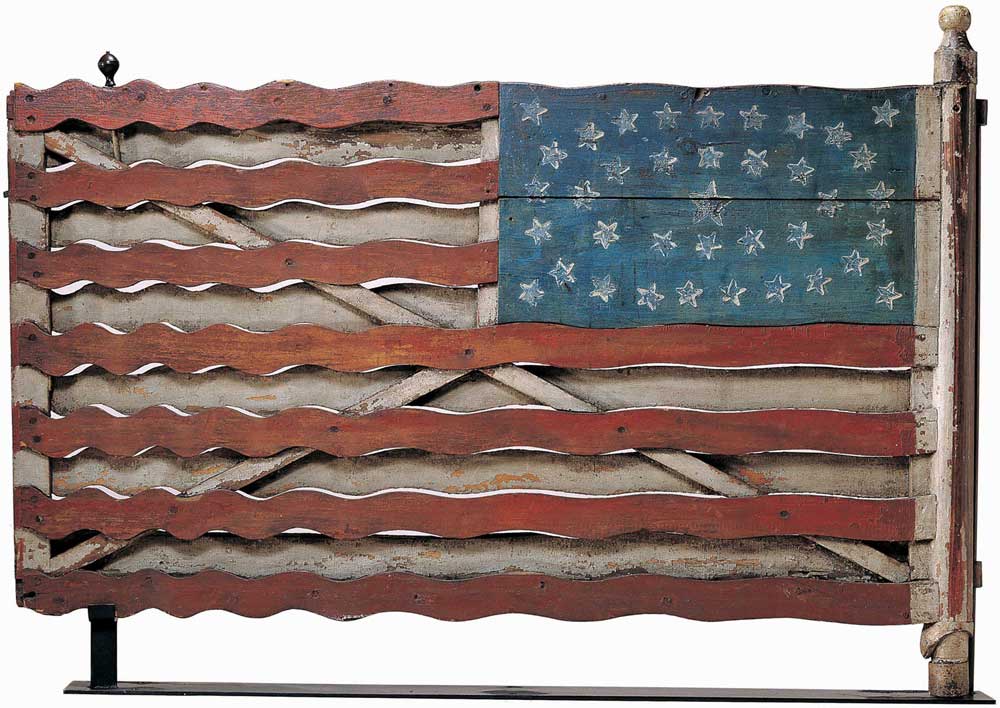
The museum’s collection was launched in 1962 with the gift of a unique utilitarian sculpture made in upstate New York. Over the years, the Flag Gate has become both an icon of American folk art and an emblem of the diversity and depth of folk art expression. Since that initial acquisition, the museum’s collection has grown rich in eighteenth- and nineteenth-century artworks from the Empire State in a variety of forms and mediums and made by a variety of artists.
This lively sampling of artworks from the collection speaks to the complex history of the state of New York. By the eighteenth century, New York’s fertile lands and prime geographic situation on the eastern seaboard were attracting migrating families from Massachusetts and other parts of New England who were seeking new opportunities, as well as significant immigrant populations such as the Germanic Palatines. Its favored location encouraged the state’s development as a major hub for markets both inland and abroad, while New York City, once the seat of government, became the financial heart of the nation. The energy of New York’s bustling harbors and the collateral activities are reflected in artworks from early manufactories in the city itself to the burgeoning pioneer communities of the western frontiers of the state. Not surprisingly, the Hudson River figures prominently as a visual theme. Quilts and coverlets attest to the state’s preeminence as a center of textile trade and production and the sophistication of the individual makers. A rare, early stoneware punch bowl derives its elegant form and decoration from imported Continental pottery. Urban show figures in wood lightheartedly satirize popular characters and trends, but the subtext hints at the encroachment of industrialization and the erosion of traditional life. Carousel animals made by immigrant carvers and intended for installation in public amusement parks illustrate the new prerogative of leisure time for all classes and the need for safe venues to escape the increasingly crowded city.
New York has always been a study of contrasts. Throughout its history, the state has thrived on forces balanced between the pragmatic and idealistic, the insular and cosmopolitan, between old ways and progressive ideas. This creative tension has vitalized the city and the state, and it is this vigorous and energetic spirit that is captured so beautifully in this folk art sampler.
Major support for programs and exhibitions at the museum’s branch location at Lincoln Square is provided by Joyce Berger Cowin. Additional support for “A New York Sampler: Selections from the Collection” is provided by Council Member Gale A. Brewer.

A View of Skeneatless Village
Fanny A. Coney (1814–1838)
Portland or Skaneateles, New York
1832
Watercolor on paper
14 1/8 x 17 3/4 in. (sight)
American Folk Art Museum, gift of Ralph Esmerian, 2005.8.47
Photo © 2000 John Bigelow Taylor, New York

Allegorical Figure: Flora
Artist unidentified
Probably New York City
1840–1880
Paint on wood
53 1/2 x 14 3/4 x 17 1/2 in.
American Folk Art Museum, gift of Ralph Esmerian, 2005.8.58
Photo by Ali Elai, Camerarts Studio, New York

“R.A.C. Box”
Attributed to Ransom Cook (1794–1881)
Probably Saratoga Springs, New York
c. 1830–1840
Paint and bronze-powder stenciling on wood with brass feet
8 1/8 x 15 1/2 x 8 1/4 in.
American Folk Art Museum, gift of the Historical Society of Early American Decoration, 88.19

Flag Gate
Artist unidentified
Jefferson County, New York
c. 1876
Paint on wood with iron and brass
39 1/2 x 57 x 3 3/4 in.
American Folk Art Museum, gift of Herbert Waide Hemphill Jr., 1962.1.1
Photo by John Parnell

Oswego Starch Factory
Artist unidentified; signed “AJH / 77”
Oswego, New York
Possibly 1877
Watercolor and ink on paper
36 1/8 x 53 1/4 in.
American Folk Art Museum purchase, 1981.12.16
Photo by John Parnell

The John L. Hasbrouk
James Bard (1815–1897)
New York City
1865
Oil on canvas
30 1/4 x 50 in.
American Folk Art Museum, gift of Mr. G.L. (Jack) Reeves Jr., 1984.18.1
Major support for programs and exhibitions at the museum’s branch location at Lincoln Square is provided by Joyce Berger Cowin. Additional support for “A New York Sampler: Selections from the Collection” is provided by Council Member Gale A. Brewer.